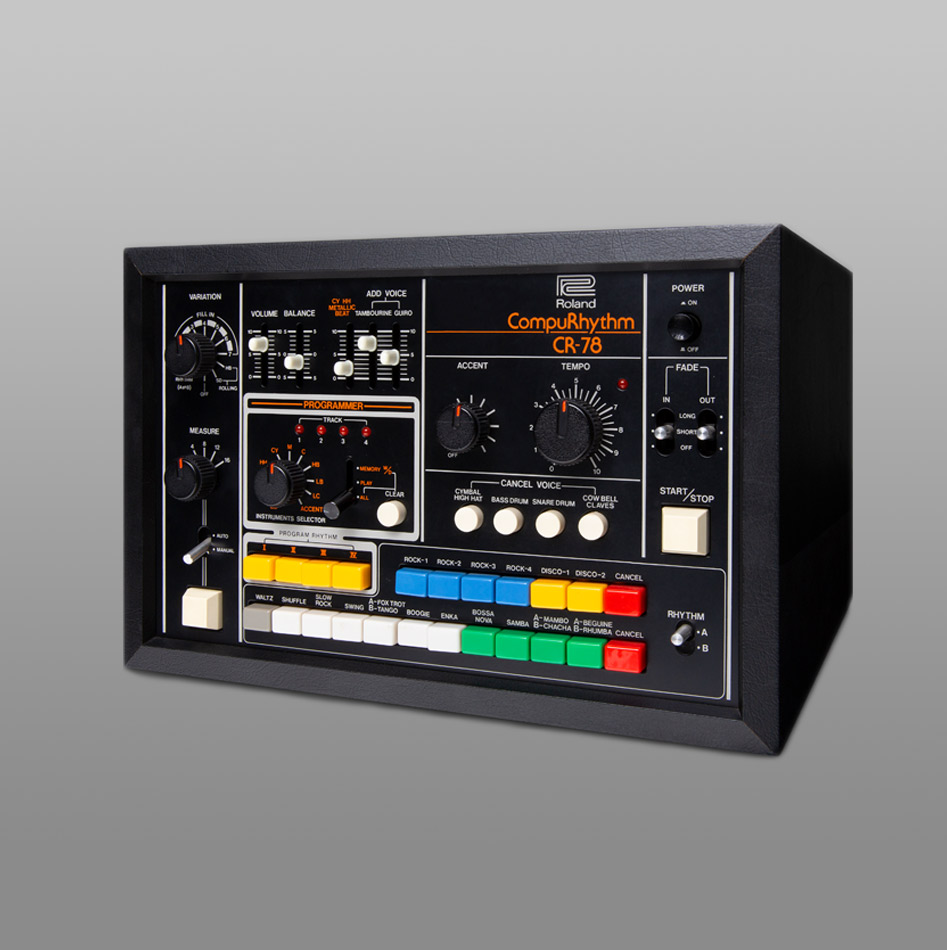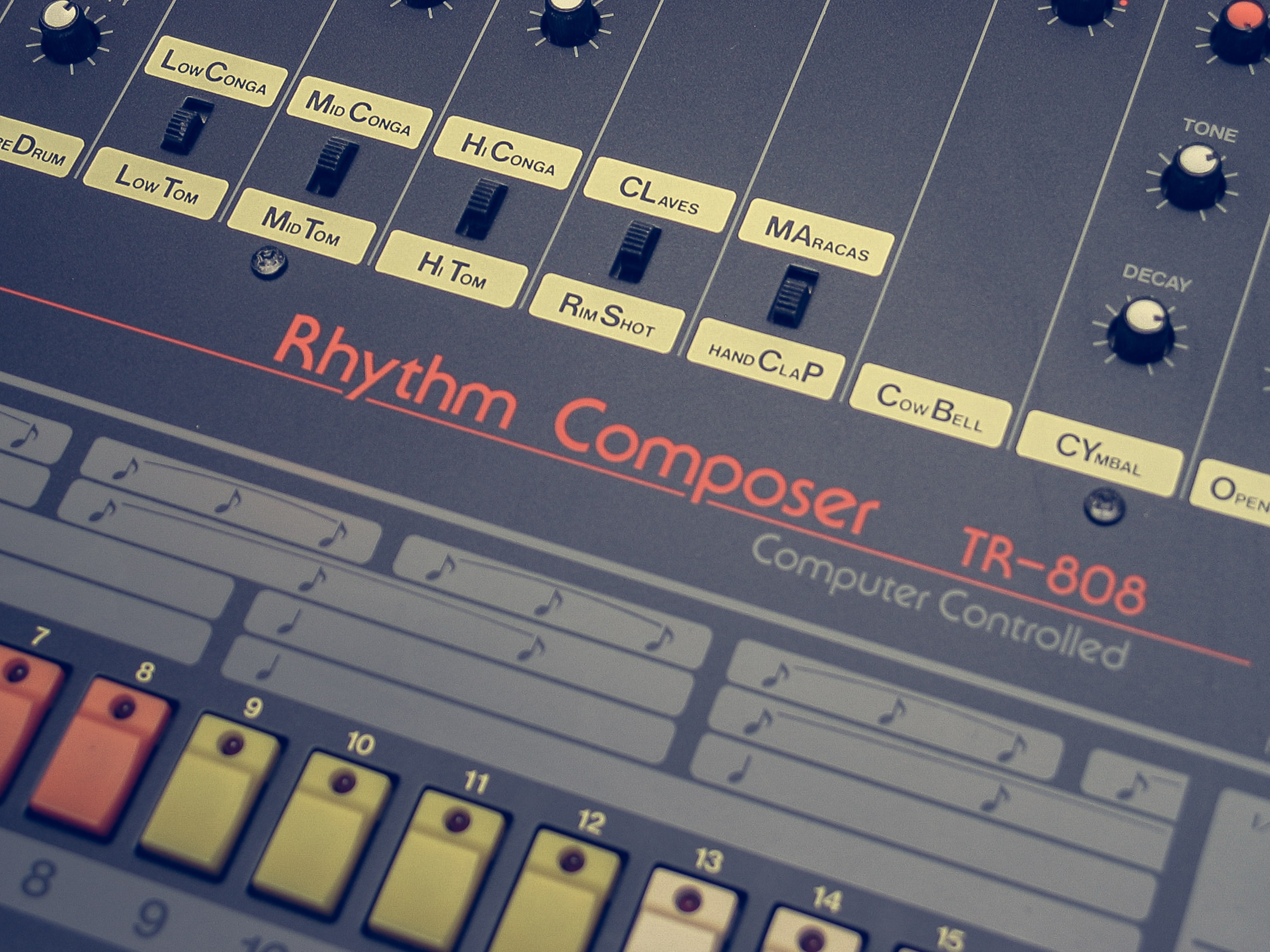What is the 808 and why is it so great?

What is the 808 and why is it so great?
We take a deep dive on the most well known and widely utilized drum machine in modern music
Whether you’re a professional producer or a casual music listener, unless you’ve been living under a rock for the past 40 years, you have undoubtedly heard the sound of the Roland TR-808 drum machine. Since its launch in 1980, this unassuming piece of music equipment has become a steadfast pillar of contemporary music. This classic rhythm composer hasn’t always been a commercial success, though. Here, we’ll explore the 808’s background, history and current position in the ever-expanding market of music production technology.
Those with a love for Roland Grooveboxes are probably equally aware of the TB-303, which makes the perfect pairing for the TR-808 to result in the Acid House sound. You can read our List of the Best 303 Plugins, or check out our Best Bass Plugins Round-up for a wider viewpoint.
What is the 808?
The Roland TR-808 Rhythm Composer, or 808 for short, is an electronic drum synthesizer and sequencer, so called due to its year of release (1980) with the TR standing for “Transistor Rhythm”. The 808 was the successor to the Roland CompuRhythm CR-78, a machine designed to provide home musicians with an easy way to incorporate rhythm into their piano or guitar practice. While these early rhythm composers were aimed at home musicians who had no access to acoustic drum kits (or a drummer for that matter), it wasn’t long before professional musicians caught wind of the musical possibilities offered by programmed drums.
Although Roland’s aim was to develop accessible machines that replicated the sound of real drums, technological limitations meant that storing and playing back recordings of acoustic kits would have been too costly. Instead, the Japanese brand opted to use analog synthesis to emulate a number of traditional drum sounds as authentically as possible. Just two years after the launch of the CR-78, Roland released the TR-808.

With 16 voices spread across 11 channels (five channels with switchable voices), up to 32 programmable patterns, accent steps and DIN Sync, on paper the 808 was a groundbreaking piece of equipment. In reality, the machine was unable to truly replicate the life-like drum sounds that its customers desired, many of whom looked to the pricier Linn LM-1 and its recorded drum samples instead. As a result, the 808 was initially unsuccessful and fewer than 12,000 units were sold worldwide.
That wasn’t the only challenge Roland faced, though. During the 808’s development, one of the engineers had sourced a unique batch of transistors that helped to add a distinctive element of noise to the final product’s sound. While this particular component did add to the 808’s unique character, it was such an important ingredient that when the electrical part was discontinued in 1983, Roland were forced to take the 808 off the market.

Repurposing the 808
By this stage though, innovative artists had been experimenting with the 808 and started to discover unconventional uses for the machine’s sounds. It’s fair to say that Roland’s interpretation of a cowbell, for example, wasn’t particularly accurate. Regardless, many hip hop artists rapidly adopted its quirky tone and it became a fundamental part of their productions.
Similarly, acoustic kick drums have a relatively short decay time, but Roland gifted the 808 with the ability to produce a sound with an extended decay time. A few forward-thinking artists started to take this feature to the extreme, and it was at this point that the fate of the 808 changed course.
Early adopters of this utilization of the 808 included Run DMC, Egyptian Lover and Felix Da Housecat. DJ Jazzy Jeff was also a vocal supporter of the 808, and likened hip hop’s innovative uses of the instrument to DJs realizing that they could scratch records to achieve creative new sounds and rhythms. It is these experimental applications of previously-established equipment that helped to shape the sound of hip hop into its current form.
It wasn’t just hip hop that was influenced by the 808’s sound. Artists from the spheres of electronic music and RnB were quick to take inspiration from how the Hip Hop scene had incorporated the 808 into their productions. Artists such as Whitney Houston, Marvin Gaye, Shannon and Afrika Bambataa all released hit songs which heavily featured the machine’s synthetic sounds.
Cut to the present day, and the 808 is as prominent as ever. Hip hop and rap, along with their many sub-genres, still rely on the 808’s booming bass tone for the low end of modern productions. The demand for this sound, combined with the limited supply has steadily driven up the price of original models over the years, with used units now reaching in excess of $5,000. While this makes the real deal a pipe dream for many, there have been a whole host of replicas, clones and emulations in both software and hardware format.
Hardware alternatives to the 808
On the hardware front, older replicas include the Jomox Xbase 888, Acidlab Miami and Novation Drumstation. More recent endeavors to crack the 808’s sonic properties include the Behringer RD-8, 8raw8, and Roland’s very own TR-8, TR-8S and TR-08, whose proprietary Analog Circuitry Behavior promises to offer the most faithful recreation of the original.
Purists will argue that the real thing is the only way to go, but it’s hard to ignore the up to date features that current models can offer, not to mention the price tags. Modern 808 alternatives are able to incorporate features that weren’t available on the original, such as tuning control on every voice, sub-steps, MIDI and audio over USB, and in the case of the TR-8S, the ability to load your own samples.

Software alternatives to the 808
In-the-box producers have an array of software recreations of the original to select from, too. Once again, Roland have their own software version of the 808, D16 Group have the Nepheton, and for those who only seek the 808’s thunderous low end, there are bass synthesizers that offer the 808 bass’ sound combined with modern day features. Softube’s Monoment Bass, Future Audio Workshop’s Sublab and Initial Audio’s 808 Studio are all software synthesizers designed specifically for taking care of low end duties. As with the hardware, these options may not be the real deal, but the added versatility that software brings is a serious advantage for producers today.

Sampling the 808
If the hardware or software options don’t take your fancy, there is a third method of incorporating the classic 808 sound into your productions without breaking the bank. Over the past 40 years, a near-infinite number of 808 samples have been made available by those lucky enough to possess their own piece of musical history. While this option doesn’t give you any control over the 808’s parameters, there are tons of samples to pick from. Plus you have the flexibility to adapt and process your chosen sounds to fit your track.
In fact, many artists went on to sample their own 808s as a preference to playing them straight out of the box. This was in part due to commercial samplers becoming available around the time of the 808’s launch, but also due to the extra flexibility offered by sampling, including tuning, looping and reversing sounds.
How to process the 808 bass drum
The 808 bass drum’s long, low tone made it a firm favorite among speaker manufacturers, who regularly received repeat orders due to the energy of the 808 tearing through speaker cones. There’s no question about the weight of the bass in a studio or club setting, but as the bass drum is essentially just a sine wave, it often sounded lacking on smaller speaker systems.
Producers and engineers were quick to overcome this issue by saturating and distorting their source sounds, thus adding higher frequency harmonics that are more audible on headphones or on the radio. Over the years, this technique has been taken to extremes in the realms of hip hop and rap, with the distortion becoming a stylistic choice as opposed to an engineering necessity.
Another processing technique that has become prominent in recent years is the zero-crossing approach, whereby the sustained part of an 808 bass sample is looped within a sampler to create a smooth pitched instrument. This allows the bass to be played in a legato style, with a continuous glide between notes. Drill, a subgenre of hip hop, has grabbed this technique with both hands, and combined it with the distortion method mentioned above to create a distinctive new style of bassline.
Without the Roland TR-808, today’s musical landscape would undoubtedly sound worlds apart from how it does now. It is inevitable that its legacy will continue to dominate contemporary productions, and the innovation and application of its sound will continue to evolve.
Other articles
Advent Sale - An Exclusive Deal Every Day
‘Tis the season of Advent Savings at Plugin Boutique. Each day we’re adding a new huge exclusive sale to make your winter tune sparkle. From characterful instruments to cutting-edge effects, we’re loading your festive calendar with the tools that make ideas come alive. So far, we’ve unwrapped incredible savings from industry favourites like Wavesfactory, Excite Audio, IK Multimedia, Native Instruments, XLN Audio, and many more - with plenty of surprises still waiting behind the next door.
Gift Ideas Under $100 for Music Producers
That time of year is upon us again, there’s one thing that gets harder every year: deciding on what gifts to give. Music production can be an expensive hobby, and practically no one’s home studio can expect to be graced this year with an upgrade like a new hardware synth, a new pair of monitors, or a new laptop – unless it’s Paris Hilton’s Home Studio, maybe. But as it turns out, you don’t have to break the bank to get some new – and possibly life-changing – studio upgrades. For this article,
A Bargain for a Good Cause – Excite Audio & LNADJ Unite for Giving Tuesday
Opportunities in the creative industries are scarce, and this holds even more true for young dreamers coming from challenging backgrounds. Keeping this in mind, we’re delighted to present a noble charity fundraising deal by Last Night A DJ Saved My Life (LNADJ) in collaboration with Excite Audio. Starting on Giving Tuesday (2nd December 2025), and for a total of 48 hours, we’re aiming to round up as much money as possible for LNADJ and make music production more accessible for everyone. Throu
The Best VST Plugins To Buy in 2025
Where would music be without plugins? Probably in a much worse and less creative place. Producers everywhere have discovered the inspiring and educational uses they get from running third-party VSTs in their DAW of choice, and both they and their fans have never looked back. In this article, we’ll list the best VST plugins available to buy in the world right now, in our considered, expert opinion. Each of these entries is a paid-for plugin – if you’ve got a smaller budget, swivel over to ou
